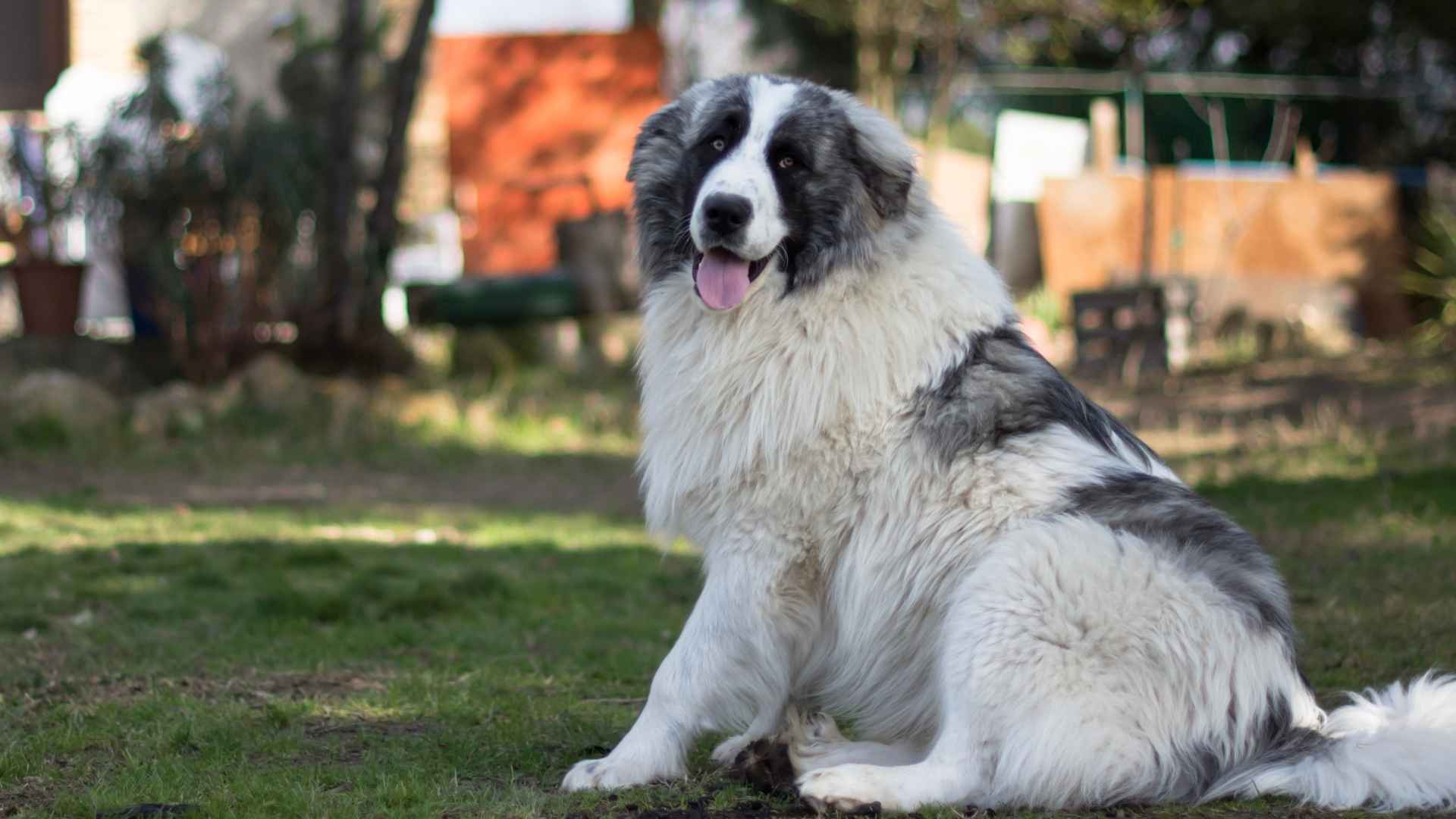What does true protection feel like? No alarms. Not cameras. Just the quiet knowledge that someone would stand between you and danger without being told. That’s what XL Guardian breeds offer.
Their presence alone is enough to stop most threats before they start. They’ve been bred across continents, climates, and centuries for one purpose: to protect.
But not all big dogs are guardians, and not all guardians are right for every home. Their loyalty runs deep, but their independence does too.
If you’ve been searching for a protector with weight, instinct, and history behind every step, this article introduces the XL guardian dog breeds you can trust with your peace.
Guardian XL Dog Breeds
1. Kuvasz
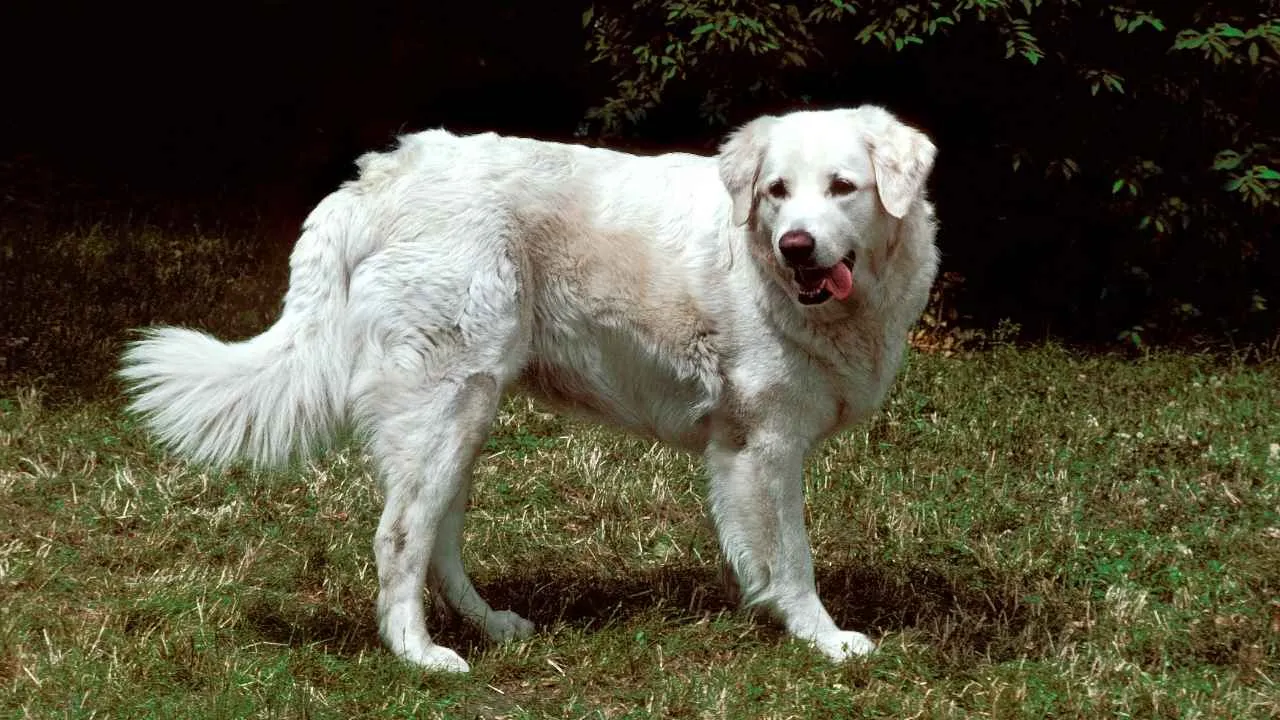
The Kuvasz is known for silently surveying its surroundings, stepping in only when it senses a real threat. This calm but calculated presence makes it a dependable guardian of both livestock and land. Its territorial instincts are sharp but not impulsive.
Impressive Size and Structure
One of the most imposing large dogs, the Kuvasz has a dense, muscular build paired with surprising agility, as mentioned in Showsight Magazine. This strength is matched by endurance, allowing them to patrol expansive areas without tiring easily. Their physicality alone discourages intruders.
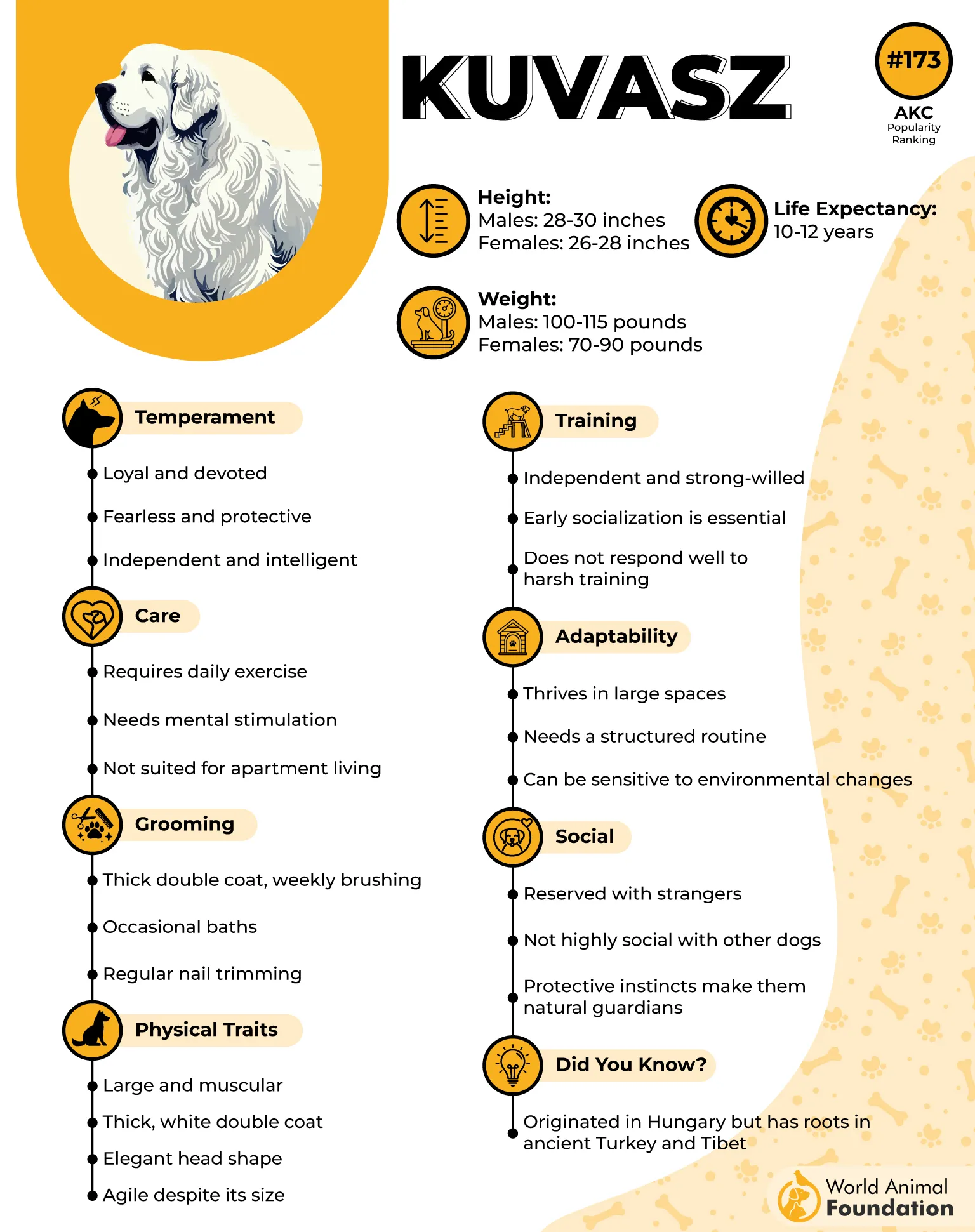
Protective Yet Independent Thinkers
They don’t require constant commands or reminders to act; the breed evaluates situations before reacting. This independent judgment has deep roots, as they were originally bred to protect without direct human oversight. That instinct still shapes their behavior today.
Famous for Their Snow-White Coats
Known for their striking appearance, Kuvaszok are covered in a thick double coat that insulates them in harsh climates. This coat was developed for function during long hours outdoors. The color also helped shepherds spot them at night.
2. Bernese Mountain Dog
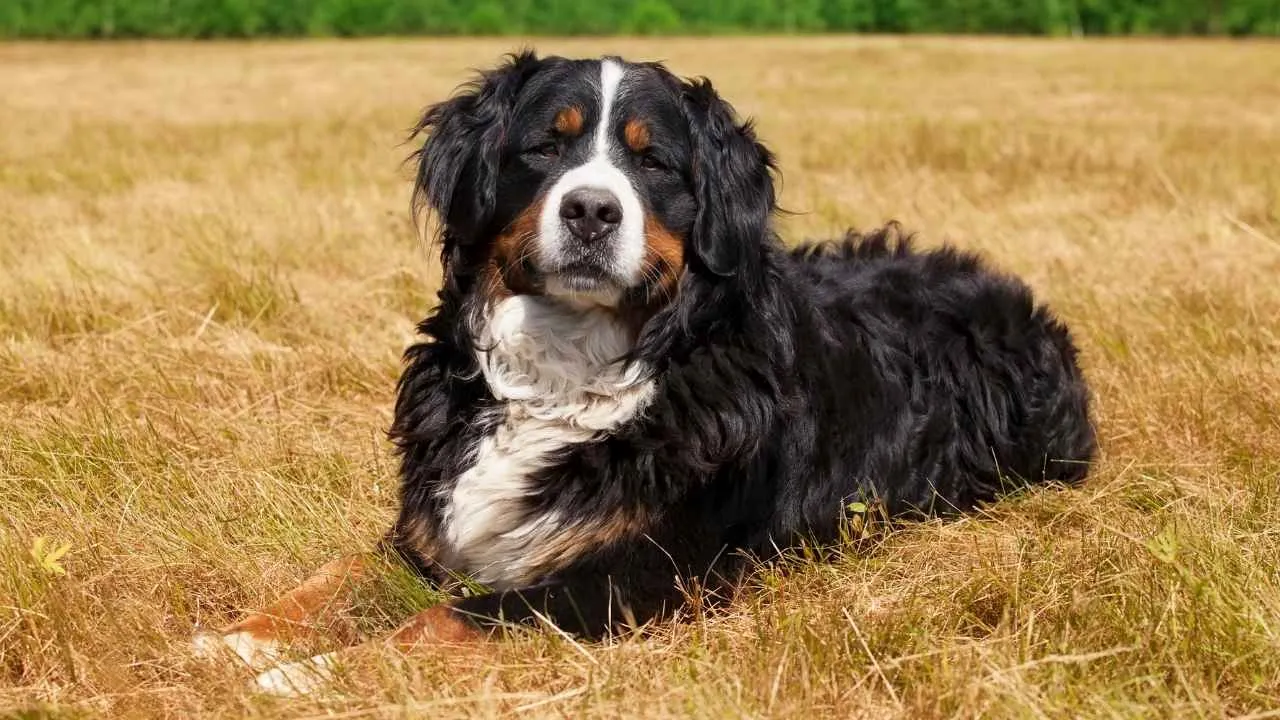
Bernese Mountain Dogs are naturally alert without being overreactive, making them effective deterrents. Their quiet observation comes from a strong sense of duty to their surroundings. When needed, they step forward with measured and confident responses.
Heavy-Boned and Broad-Chested
As one of the most recognizable giant dog breeds, the Bernese stands out with its powerful legs and thick frame. The sturdy bone structure contributes to steady movement and better weight distribution. This minimizes strain even when navigating uneven terrain.
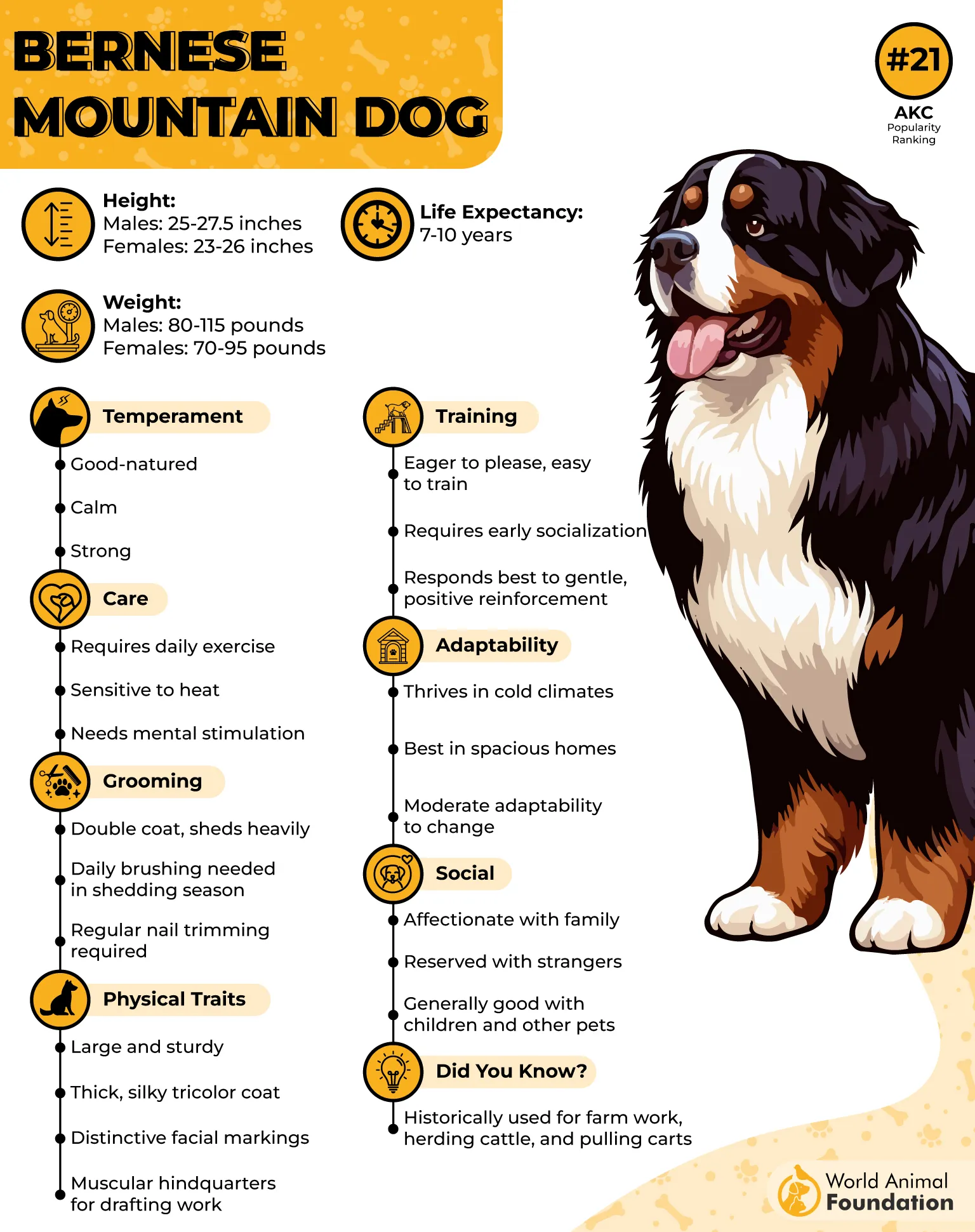
Gentle and Protective Instincts
Bernese are known to be great family dogs, especially with children and other pets, as stated in the Purina. Their protectiveness comes with emotional awareness, often adjusting their behavior to the environment. These dogs tend to bond deeply with their primary household members.
Known for Their Distinctive Tricolor Coat
Their long, thick coat features a specific rust-and-white pattern that is genetically consistent across the breed. This coat offers natural insulation, especially suited for cold-weather work. In snowy regions, their fur also helps reduce ice buildup near joints
3. Newfoundland
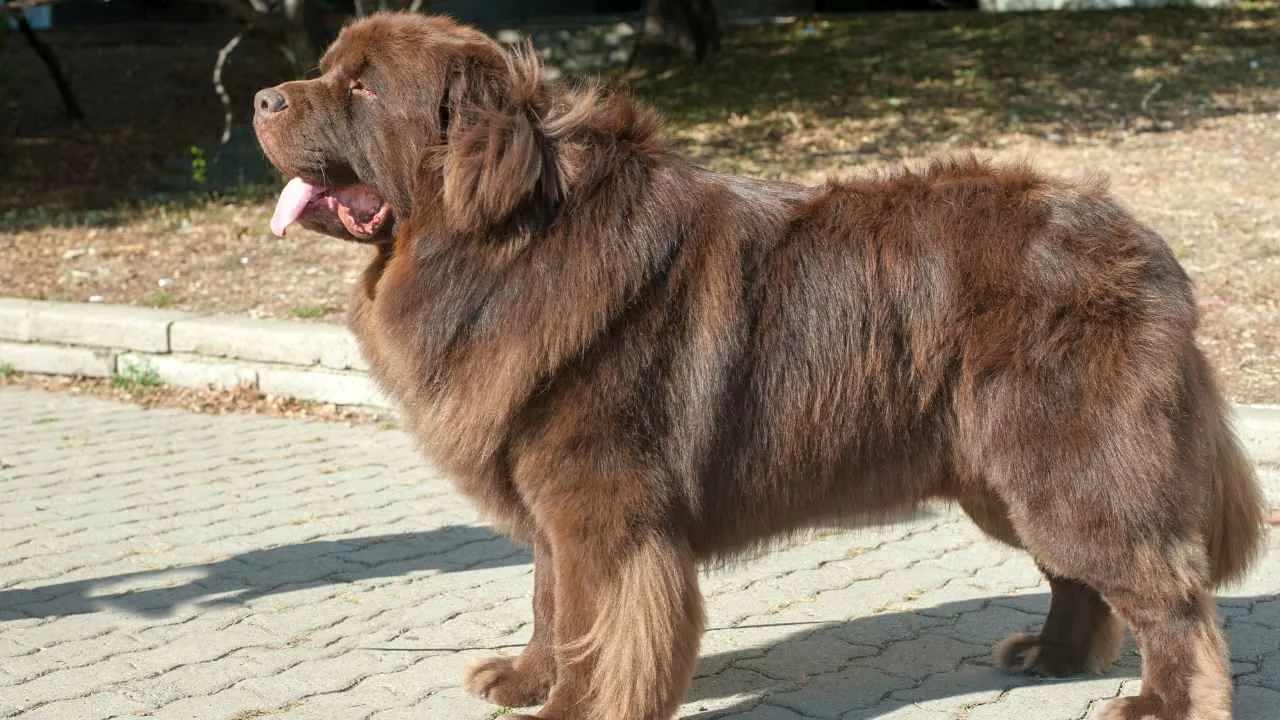
Newfoundlands can weigh up to 150 pounds, standing tall with broad chests and powerful frames. Their strength allows them to pull loads or even drag a person out of water without strain. This physical power supports their role as calm, capable guardians.
Protective With a Subtle Watchfulness
They don’t bark unnecessarily or display aggression without cause, but they remain aware of what’s happening around them. Their ability to distinguish real threats from harmless activity makes them effective in family settings. They instinctively stay close to those they protect.
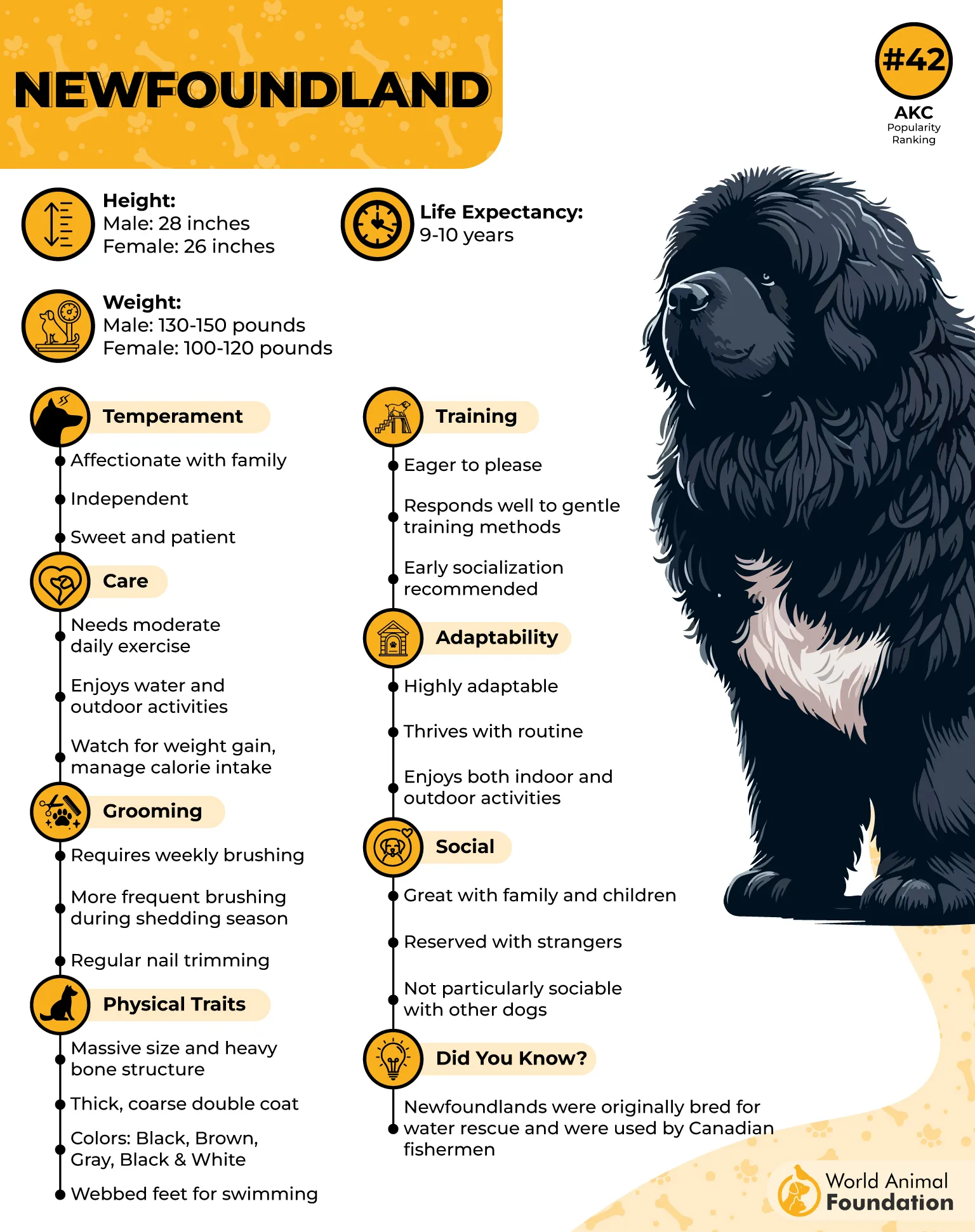
Impressive Structure and Climate Resilience
With a thick, water-resistant double coat and strong webbed feet, they’re built to handle extreme cold and wet conditions. Among large dog breeds, they stand out for their endurance in icy terrains. Their physical traits are ideal for both land and water defense.
Known for Remarkable Water Rescues
Often referred to as one of the gentle giants of the canine world, Newfoundlands are also known for their lifesaving instincts. They have been credited with pulling drowning people to safety, even without formal training. This rare trait is deeply ingrained and documented historically.
4. Leonberger
The Leonberger is a big dog by every measure, often weighing over 150 pounds, yet carrying its size with a calm, even stride. Their broad chest, thick neck, and powerful legs create a presence that can hold ground when it matters. Despite the size, their movements are smooth and deliberate.
Protective Without Overreacting
This breed doesn’t bark without purpose — it assesses first and responds next. Leonbergers are known to place themselves physically between their loved ones and unfamiliar situations. Their guarding behavior is more instinctive than reactive, which makes them reliable in family environments.
Emotionally Attuned to Their Environment
Leonbergers are highly perceptive of emotional changes around them and adjust their behavior accordingly. This trait is why they’re often considered great companions for homes that value both affection and awareness. Their bond with people is steady, not demanding.
Known for Water-Rescue Capability
With their webbed feet and dense water-resistant coat, Leonbergers have served in alpine water rescue tasks across Europe. Their natural swimming ability and endurance have been recognized by working groups for decades — a trait few guardian breeds possess natively.
5. Great Pyrenees
Great Pyrenees dogs are bred with a strong instinct to remain vigilant, often choosing high ground to survey their surroundings. They respond to unfamiliar activity with calm intensity rather than frantic barking. Their ability to quietly deter threats makes them effective in large, open areas.
Sheer Size Meets Steady Movement
Their large frame and thick bone structure support slow, powerful strides, perfect for patrolling wide fields. The deep chest and strong shoulders enhance endurance rather than just bulk. This combination helps them work through varied terrain without fatigue.
Protective Without Being Reactive
They’re known to form strong bonds with their charges—be it humans or livestock—yet operate with self-direction. As true guard dogs, they don’t wait for cues to act; they decide based on observation. Their calm confidence reduces unnecessary confrontations.
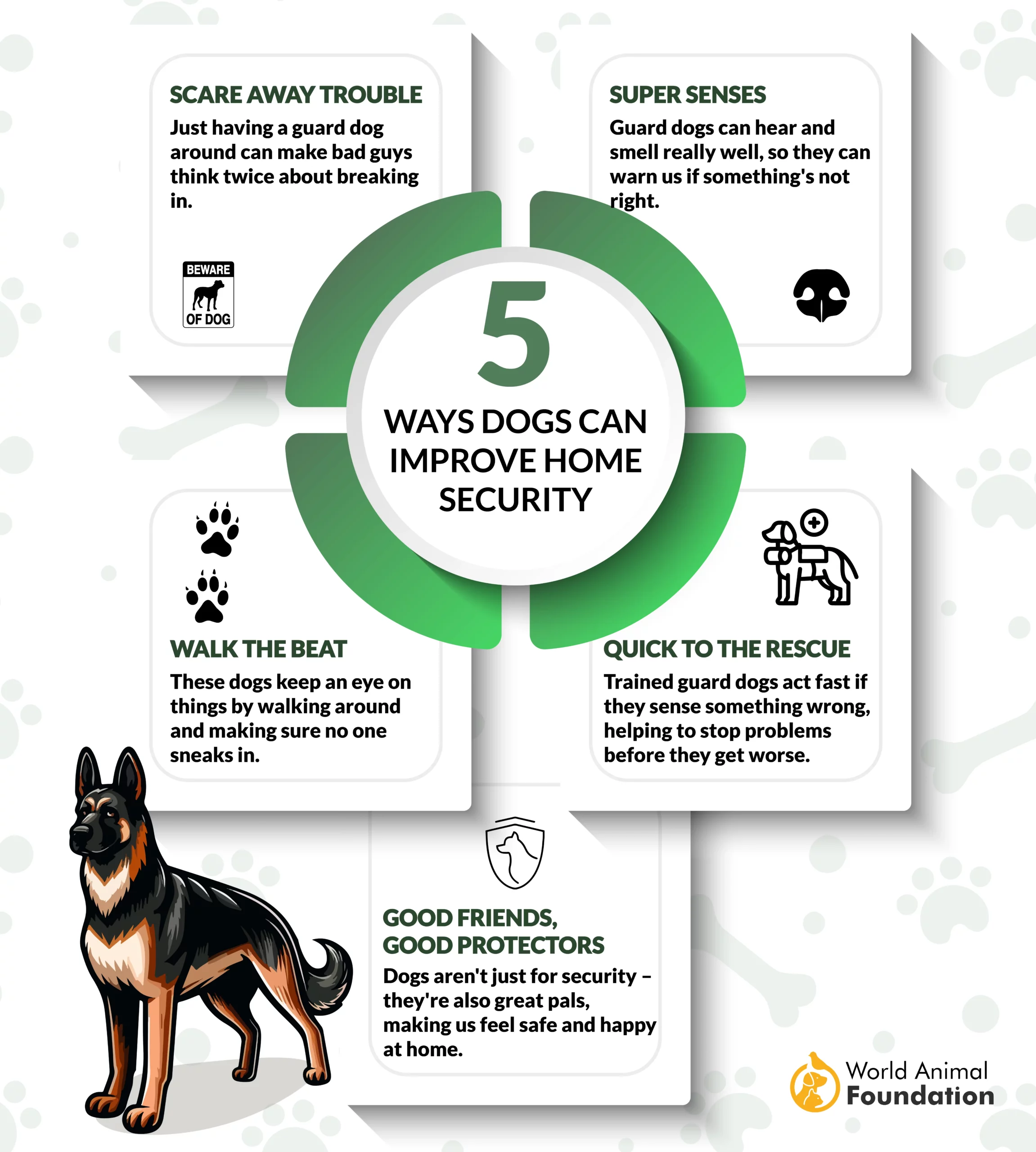
White Coat With a Purpose
Their thick double coat helps regulate body temperature in extreme climates, both hot and cold. The pale coloration made it easier for shepherds to distinguish themselves from predators in moonlight. Their coat is weather-resistant and grows in layers for protection.
6. Tibetan Mastiff
The Tibetan Mastiff stands tall with a commanding presence, weighing anywhere from 90 to 150 pounds. Its broad chest, strong limbs, and wide head give it a natural advantage in protection work. This powerful structure contributes to its ability to deter without confrontation.
Protective Instincts Run Deep
This breed has an inherent need to guard, and it sets strict boundaries without requiring cues. It often chooses one or two people to bond with and is deeply protective of them. Even as a pup, it shows signs of territory awareness and decision-making autonomy.
Extreme Weather Adaptability
The Tibetan Mastiff is equipped with an impressively dense coat that thickens even more in winter. This adaptation allows it to remain outdoors for hours in subzero temperatures without discomfort. Its coat also forms a lion-like mane that adds to its intimidating look.
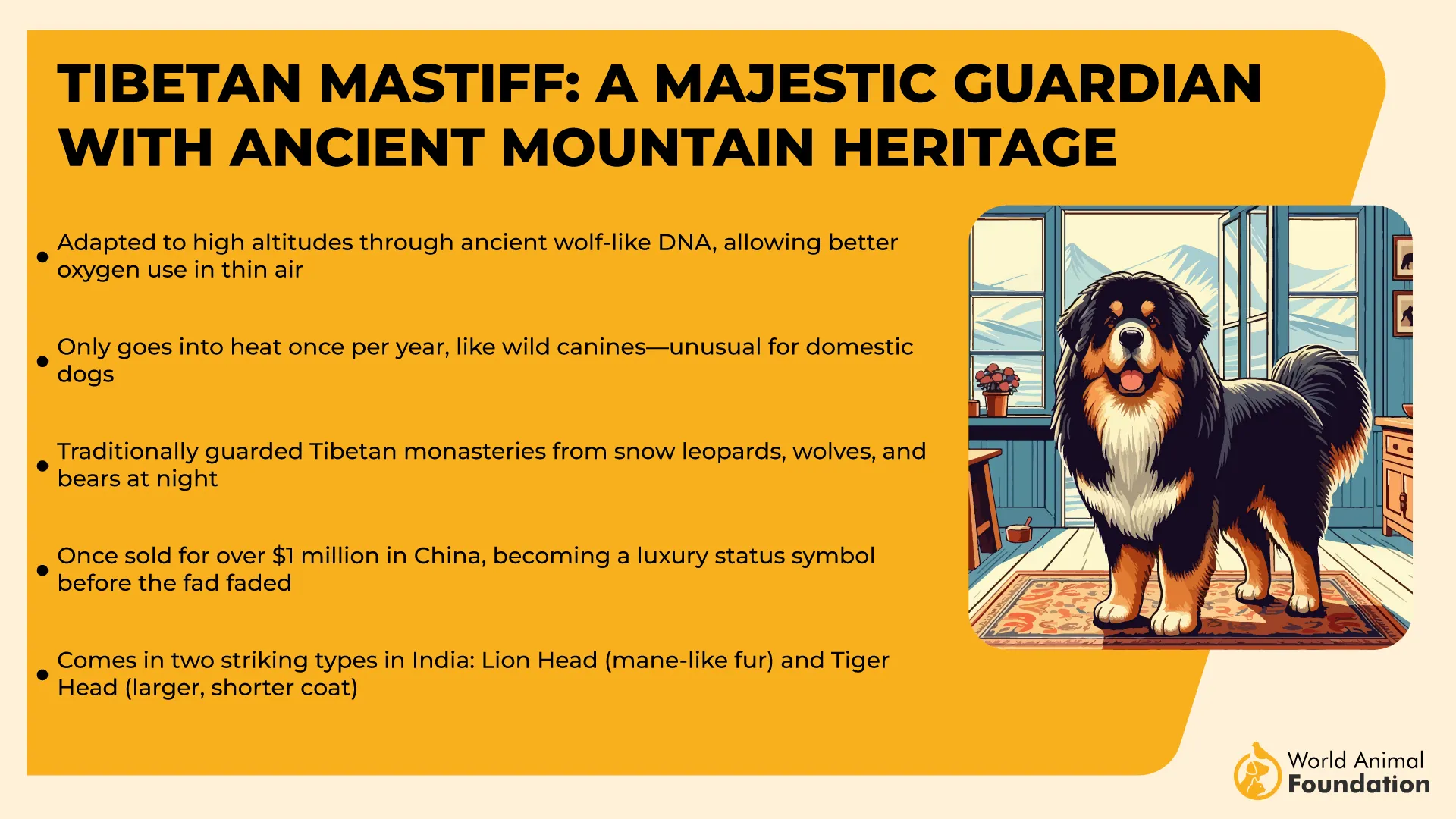
Recognized for Its Nighttime Guarding Pattern
A notable trait is its tendency to remain inactive during the day and be highly alert at night. This makes it especially suitable for rural properties, where intrusions are more likely after dark. This behavior aligns with its traditional use in high-altitude villages.
7. Great Dane
Standing over 30 inches at the shoulder, Great Danes have a size that instantly commands attention. Their deep chest and long legs contribute to an upright, confident posture. Yet, their movement remains fluid and purposeful rather than heavy.
Calm Demeanor With Situational Awareness
Though not aggressive by default, this breed stays quietly alert and attuned to its environment. It reacts appropriately when it senses a threat or an unfamiliar presence. This combination of reserve and readiness is ideal in a guardian setting.
Physical Traits That Support Guarding
Their strong frame and large skull give them a naturally intimidating appearance. Muscle distribution along the back and limbs supports endurance more than speed. This helps them stay alert and stand for extended periods without strain.
An Accurate Detail Often Mentioned
The breed is known for its ability to stand on its hind legs and look a full-grown adult in the eye — a posture some Danes reach without jumping. This rare scale makes even quiet individuals an effective visual deterrent without needing to bark.
Conclusion
These XL guardian breeds carry more than weight—they carry history, instinct, and quiet confidence. From icy fields to remote villages, they’ve watched over people, property, and herds without fail.
Many come from the world’s most respected livestock guardian dog breeds, bred to think and act independently. Some serve as reliable farm dogs, while others offer calm companionship closer to home.
They don’t react the way other dogs might—they read situations before stepping in. As some of the most capable giant breeds ever developed, including the tallest dog breed, they remain trusted livestock guardians in the modern world.


